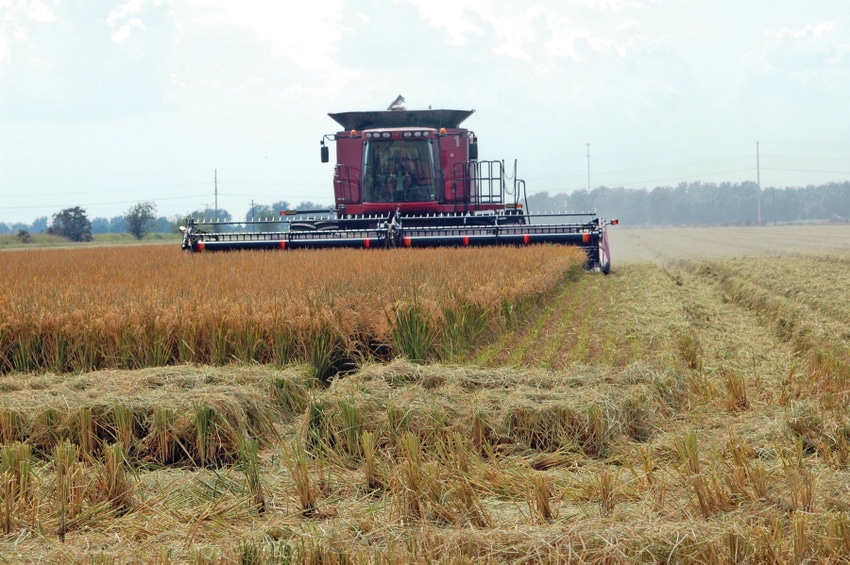August 10, 2012

The bright spot for Mississippi’s smaller-than-normal rice crop is that it is looking good at harvest, thanks to an early start and a favorable growing season.
Nathan Buehring, rice specialist with the Mississippi State University Extension Service, said most of the state’s rice was planted by mid-April, putting it about two weeks ahead of schedule.
“Everything so far looks good,” Buehring said. “This is one of the earliest planted crops we have ever had, and we’ll be heavy into harvest by the middle of August.”
The state has just 135,000 acres of rice in 2012, down from about 160,000 acres in 2011. In recent years, state growers typically plant about 200,000 acres of rice.
“Higher corn and soybean prices and low rice prices have reduced the acres to where they are now,” Buehring said.
The state averages yields of 154 bushels an acre, and preliminary yields to date have been good to excellent, he said. The U.S. Department of Agriculture rates 54 percent of the crop as good and 24 percent as excellent.
Rice has been a good rotational crop on heavy clay soils that do not drain quickly, but this year’s low prices are causing growers to consider other options.
“Many growers in a soybean-rice rotation are sticking with soybeans another year, and some planted corn on the heavier ground,” Buehring said.
Drought’s Arkansas advance proving relentless north of I-40
U.S. corn and soybean yields continue to falter under heat
Some producers with silt loam or sandier soils opted to grow corn or soybeans.
“We’re losing acres with the price structure of the other competitive crops,” Buehring said.
Drought is not a big issue with rice as the fields are kept flooded from four to six weeks after planting to about two weeks before harvest. High temperatures can cause pollination problems.
“Nighttime temperatures during pollination cooled off to the low 70s even though it was in the 100s during the day,” Buehring said. “We haven’t had the heat sterility problems that we’ve had the last few years.”
Insect and disease pressures were light, and producers are hoping for mostly sunny skies over the next few weeks to get the crop harvested.
Lester Stephens, Extension agronomic crops agent in Washington County, said his county is No. 2 in the state in rice production behind Bolivar County. Rice is down this year to about 14,000 acres, where in the past growers have planted as many as 50,000 acres of this crop.
“We’ll probably have even fewer rice acres next year because the price of soybeans makes it a more desirable crop than rice,” Stephens said.
He said the crop looks great this year.
“The Mississippi Delta and southeast Arkansas are in an isolated part of the country this year,” Stephens said. “We have great crops, and not everybody else does.”
John Michael Riley, Extension agricultural economist, said cash prices for milled long grain rice are about $25 per hundredweight. September futures for unmilled rice are trading at $15.70 per hundredweight, closely tracking 2011 levels.
“Arkansas is the nation’s largest rice producer, and the state is getting hit pretty hard with drought,” Riley said. “Prices have started to creep higher, adding about $1.50 to $2 per hundredweight since early June. This is largely due to the increase in other cereal grain prices — like corn — since rice can be substituted into diets to replace these other starches.”
Market prices may change once harvest begins in earnest and actual yields are known, Riley said.
You May Also Like




